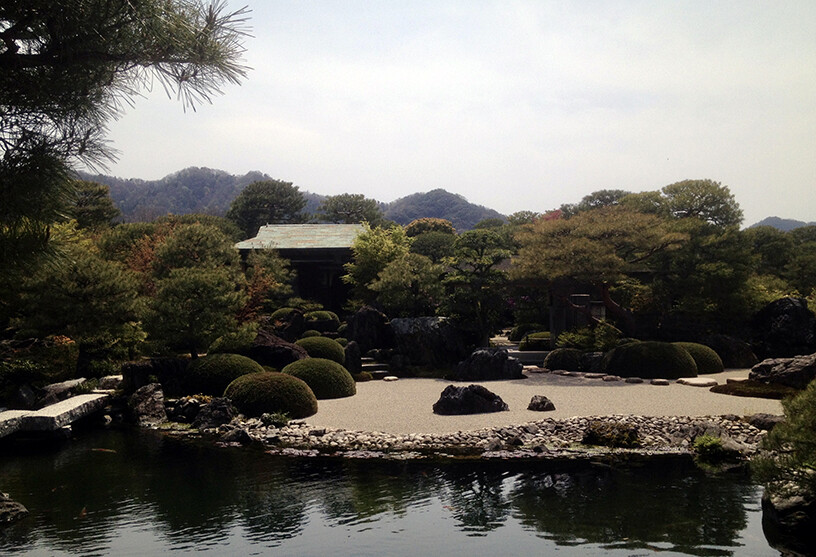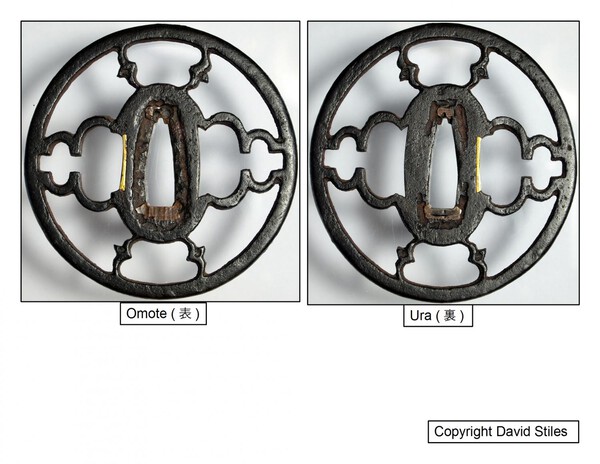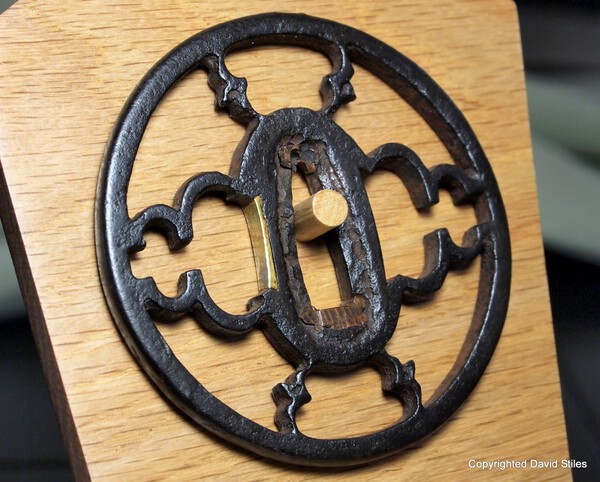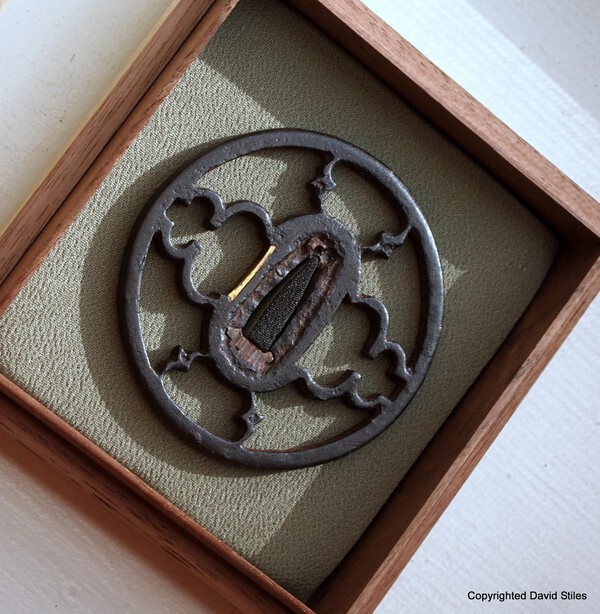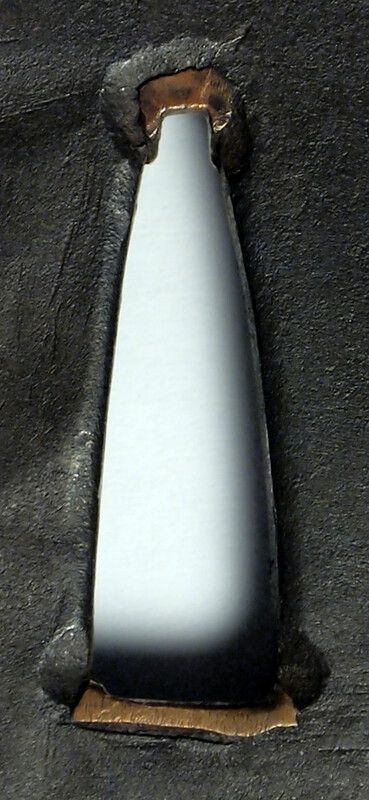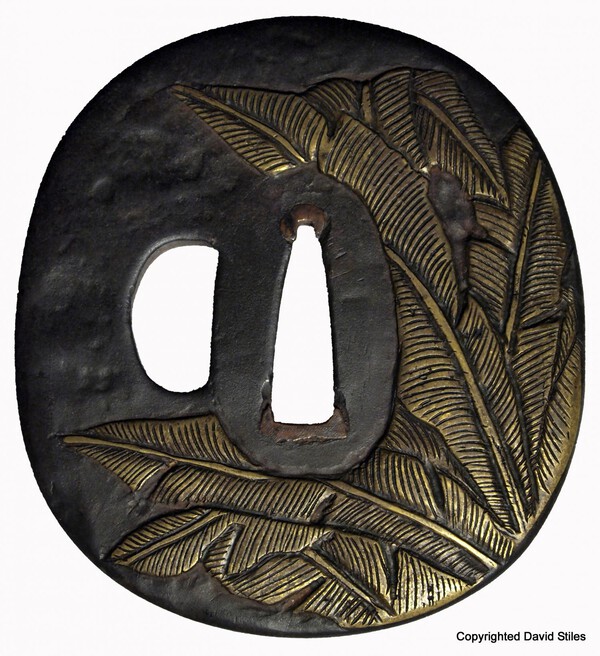-
Posts
2,901 -
Joined
-
Last visited
-
Days Won
3
Content Type
Profiles
Forums
Events
Store
Downloads
Gallery
Everything posted by Soshin
-
Hi Everyone, Agree with Steve and Chris comments. Nothing much left for me to say on this topic.
-
Hi, Very nice tsuba. Thanks for sharing the photo from Facebook.
-
Hi Everyone, A quick bump to the tsuba kantei topic. Thanks for everyone who has participated so far in the tsuba kantei. I will start to try and write something up tomorrow after work and have it posted by Thursday including a photo of the NTHK paper along with the tsuba.
-
Hi Everyone, Here is a scan of a photo of some of Yonemitsu Tahei work that was referenced by NBTHK in the magazine article (02-2010, No. 637) that Peter posted as a reference for Tanabe Yasuhira. Both wonderful tsuba examples are clearly done in a Hayashi School style. Sometime in the future I would love to have an example of Yonemitsu-sama fine work in my humble collection.
-
Ford, Yes I consider those type of things all the time when examining iron tsuba but will never do any type of destructive testing. The mass of the tsuba is 70.9 grams.
-
Hi Everyone, Decided to offer up a newly acquired and photographed tsuba of mine for a Kantei game. It has been issued a NTHK paper and I also have its original shinsa worksheet. Here is what I am looking for in the answers if possible along with some type of reasoning. The measurements of the tsuba are 7.5 cm wide by 7.4 cm high. The thickness at the rim is about 5.0 mm. What is the approximate age? [Examples: Late Edo Period or Early Jōmon Period] School or group that made the tsuba? [Examples: Goto School or Ko-Katchūshi] Province and/or major city where it was produced? [Examples: Settsu Province and/or Edo] What is the design(s)? [Examples: Rain Dragon or Shishi] What is the quality level of the piece as evaluated by the NTHK? Did tsuba received a shintesho, kanteisho, or yashu-saku level papers from the NTHK? What was the approximate point score? [Examples: kanteisho, 70 pts.] The tsuba is not listed on my website. If you have any questions please send me a PM as to leave space for replies to the topic for answers. The shinsa will run a week starting today and then I will post a detail answer to each question and include a photo of the NTHK paper along with the tsuba.
-

Tsuba Otaku December 2014 Website Updates..
Soshin replied to Soshin's topic in Auctions and Online Sales or Sellers
Hi Everyone, Quick update I will be sharing a table all three days of the Tampa Japanese Sword Show on Feburary 20, 21, and 22, 2015 at the Tampa Airport Marriott. Feel free to stop by, say hello, and see many of the tsuba on my website in person. Here is a link for more information about the show. http://www.southeastshowsauctions.com/tampa-2015.html -
Hi Chris and James; Thanks for the posts full of very good points of consideration.
-

Tsuba Otaku December 2014 Website Updates..
Soshin replied to Soshin's topic in Auctions and Online Sales or Sellers
Hi Eveyone, Website update for February 2015 is now live. In terms of new sale items I have added a nice Kinko Kenjo tsuba gallery #1. I have also posted the full write up of a very nice Ko-Katchūshi tsuba that sold last month to a NMB member. The homepage has additional photos of a really nice menuki set that was discussed a few months ago. The link to my website is below. -
Hi Everyone, I think I am starting to understand Junichi's convoluted topic a bit better. I agree with Guido and Brian but then again my experience in Japan is very limited to mostly buying pices at stores and going to museums. I hope to go back to Japan for a visit soon. I am fairly sure the dynamics of collector groups and shows in the USA is very different then Japan.
-
Hi Howard, In some sects of Buddhism Bishamonten is one of the four heavenly kings (I.e. gods) and is associated with the northern direction as well as war. He along with the three other kings are associated with and are the attendants for Kannon Butatsu. He like all the other heavenly kings has his own associated Bonji character that is the seed syllable of his mantra.
-
Hi Everyone, Clearly see what I think is worn black lacquer on the surface but then again the photos and lighting are not the best. Having the tsuba in hand in good lighting and it would be easy to tell.
-
Hi Guido, That makes sense. I have seen this Kanji for " ko 工" before it is also used in the very general terms "Ko-Kinko 古金工" and "Kinko 金工". It basically only means artisan...
-
Hi Hamish, Your tsuba is yamagane with nice patina and a few layers of kuro-urushi on it. I sold a similar tsuba a few weeks ago made for a kodachi that dated from the early to mid Muromachi Period. The kozuka hitsu-ana is likely not original. I like these types of early tsuba.
-
Hi Peter, My reply to your post have been lost. Thank you. Yonemitsu Tahei was the student of Tanabe Yasuhira who worked in a Hayashi School style. Still looking for references that link Tanabe Yasuhira as a student of the 5th generation Shimizu master Shigenaga who was active in the in the mid 1800s. From how the nakago hitsu-ana is finished on my tsuba it looks like the work of Shigenaga or one of this many students who were all know to copy his style down to the finish of the nakago hitsu-ana. Attached are some cropped photos of both sides of the nakago-hitsu ana for reference. Omote Ura
-
Hi Junichi, Here is something I found on the topic your posted about. It is from Elliott D. Long website (http://www.shibuiswords.com/tsuba.htm#tanko) and it quotes Robert E. Haynes. I have updated my website and added what I feel is a good example of a "Tanko" tsuba circa the Muromachi Period: http://www.tsubaotaku.com/#!gallery3/c211q. I put it in the category of Ko-Katchūshi tsuba but it also has some characteristics of Ko-Tôshô tsuba. It is the second tsuba from the top of the webpage. I had a very wonderful conversation with Robert Haynes back in November and he told me that he will be attending the Tampa show later this month. I am looking forward to meeting him and Elliott.
-
Hi Everyone, Well I did some digging in my reference books and I wasn't able to find anything. Pete Klein since you were the one who first referenced Tanabe Yasuhira work for my above tsuba on another topic. Could you please provide some references or additional examples? P.S. I did find in my research a funny music video that made me think of you Pete correcting all my grammar mistakes on NMB. Enjoy... http://youtu.be/8Gv0H-vPoDc
-
Hi Matt, When you first posted the measurements they were in English units and I did the unit conversion to metric centimeters and was thinking the thickness was about 3.0 mm at it thickest likely the toward the center being a Tosho tsuba. At 3.81 mm at the rim is a bit thicker then what I was expecting. I would say you likely have a later Tosho style tsuba as Marius states above. The issue of thickness is discussed in my article about Tosho tsuba written for the JSSUS newsletter that is on my website. It the article I have a signed Tosho tsuba around 4 mm in thickness.
-
Hi, I like to date the late Edo Period a bit wider say 1770 to 1868. I agree your tsuba is likely the work on the Aizu Shoami School. Keep in mind there was much cross pollination between the Mito, Nara, and Aizu Shoami schools during this time period. There is a new book focus on the Aizu Shōami School written by Danny Massey and Tsuguyasu Wada of Nihontocrafts website. It would likely allow you to better appreciate and understand your tsuba. Here is a weblink: http://www.nihontocraft.com/Nihonto_books_for_sale.html
-
Hi Matt, Typically Tosho tsuba have a thicker center (seppa-dai) then rim. This is fairly consistent trait of Tosho tsuba in general.
-
Hi Matt, From your measurement it is a bit small and likely made for a wakizashi. I would estimate a age range from Azuchi-Momoyama Period to the early Edo Period. This is the late 1500s to early 1600s. I would estimate a retail price of about $125 to $175 USD if I was trying to sell it online or at a show. From the limited photos (better focus helps) it is hard to get a true idea of the condition of the iron surface and if the restoration work was done correctly. Hope you find the information helpful.
-
Hi Matt, It looks like a Tosho tsuba in poor condition. What are the measurements including thickness? This important in determining the age and value which I can provide you with. I wrote a article about Tosho (sword smith) tsuba for the JSSUS newsletter a few years ago. A link is included here for my website where the article is located as a PDF. http://www.tsubaotaku.com/#!galleries/component_41229 The link is towards the bottom of the webpage.
-
Hi Everyone, Can someone post some examples or references of Tanabe Yasuhira work who studied under Shigenaga the 5th generation Jingo master? I think he was located in Kumamoto during the late Edo Period circa 1850 and worked in a Jingo School style. Attached are photos of a tsuba that might be his work. The design of Banana Palm was made popular by the 5th generation master. This is a large tsuba measuring at 7.8 X 8.5 cm, 4.6 mm at rim. I presented 1:1 scale photos of this tsuba to Bob Haynes in November and received very positive feedback about it from him. I will present this tsuba to Bob in person at the upcoming Tampa Japanese sword show next month. This tsuba will be going to the NBTHK shinsa later this year. More information is available at my website: http://www.tsubaotaku.com/#!gallery4/c1jbk. It is the last tsuba on the webpage. P.S. Here is a example by a Kumamoto artist during the late Edo Period: http://www.tsuruginoya.com/mn1_3/b00027.html ,

